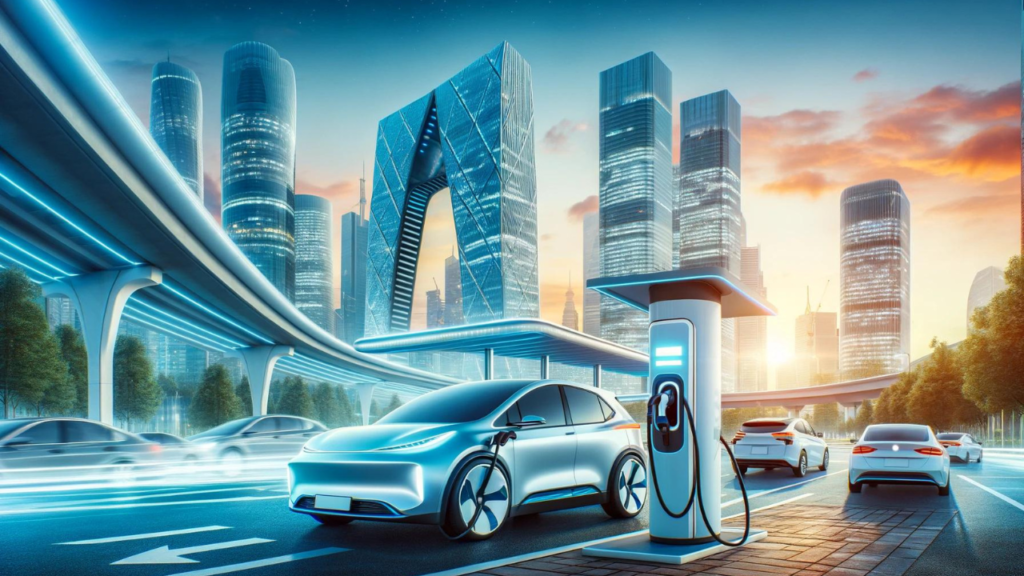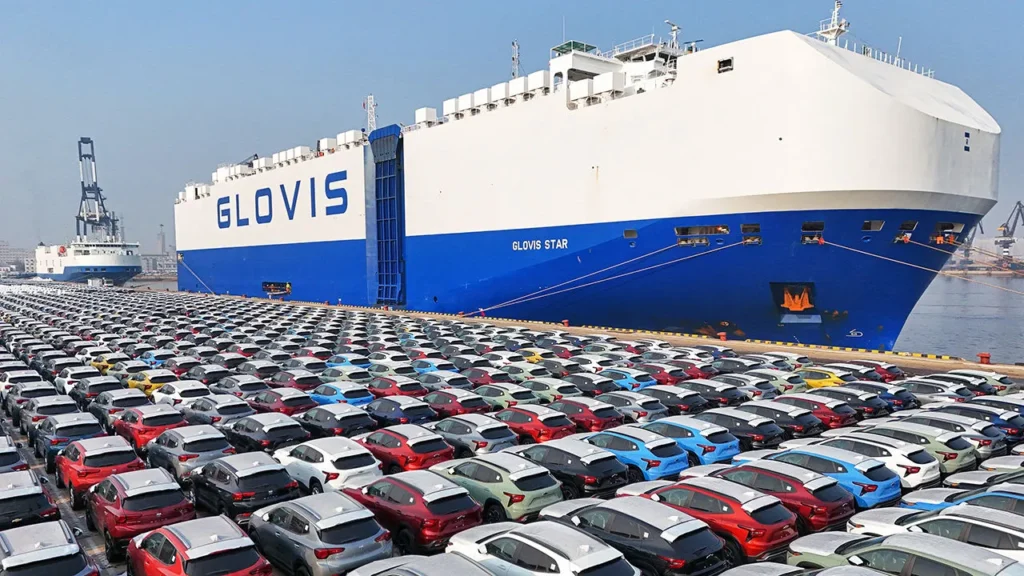Professor Ouyang Minggao of Tsinghua University predicted in 2010, when annual global sales of electric vehicles had yet to surpass 50,000, that new electric cars would account for 20% of the yearly sales of traditional fuel-powered vehicles by 2020. He also forecasted that “even if subsidies for electric vehicles are phased out, by 2020, electric vehicles will reach a level where they can compete with conventional fuel-powered vehicles.” This demonstrated his foresight regarding the rise of China’s new energy vehicles years in advance.
At the time of these statements, Ouyang Minggao was the head of the group responsible for science and technology special projects under China’s 12th Five-Year Development Plan. Despite not owning any businesses, Ouyang made significant economic contributions through his “student-teacher” collaborative projects, generating over 10 billion yuan (approximately $1.5 billion). He encouraged 25 Tsinghua University students to invest and establish their own companies, some of which have become publicly listed. Ouyang is more drawn to the market than academia, believing that the market can accommodate diverse perspectives and arguments.

Few believed at the Time.
In 2021, when Ouyang Minggao proposed gradually restricting the use of gasoline vehicles, he faced verbal attacks from social media users. He recalls being criticized, with claims that he held stakes in companies benefiting from such policies. Ouyang summarizes the development challenges of China’s automotive industry into three critical issues: “Our automotive industry is weak, dependence on petroleum is increasing daily, and air pollution is intensifying.” These observations were previously discussed in our article titled “Can Western China Halt the Automotive Industry?” [1].
While the rapid development of China’s new energy vehicles took off after 2020, the subject’s debates date back to before 2010. During the Beijing Olympics, China showcased electric, hybrid, and hydrogen cars, claiming they were superior to other vehicle types. These efforts were endorsed by the Chinese Communist Party (CCP) of the time.
Reflecting on the 2010s, Ouyang noted that electric vehicles were not yet competitive, as their range was limited to only 100 kilometers. Therefore, he advocated prioritizing the adoption of electric vehicles in smaller and larger vehicle categories rather than frequently used passenger cars. Due to their high usage and limited range, passenger cars would require constant recharging, presenting a significant challenge. In Ouyang’s words: “Let us first tackle the simpler tasks and develop them before addressing the more difficult ones.”
From Small-Scale to Large-Scale Usage
One of China’s key advantages is its massive population of 1.3 billion, effectively governed by the Chinese Communist Party (CCP). Additionally, China’s major industries are concentrated in specific regions, and production costs are reduced through efficient logistics and large-scale manufacturing. This framework makes initiating projects in underdeveloped industries more feasible, supported by significant incentives from both local and central governments. For instance, a report released by the Chinese Ministry of Finance on June 8, 2024 [2], revealed that a total of 6.44 billion yuan (over $900 million) was allocated in subsidies and incentives under the “Trade-in Your Old Car for a New One” program in 2024.
Ouyang Minggao recalls that initial projects began with the “1 city, 100 vehicles” and “10 cities, 1,000 vehicles” initiatives, later evolving into “1 city, 1,000 vehicles” and “10 cities, 10,000 vehicles” programs. When the projects were first introduced, bus companies were reluctant to adopt them. However, with a clear policy in place, persistence over three years led to significant advancements in battery technology.

The Engine of Electric Vehicles: The Battery
Although ternary lithium batteries have a higher energy density compared to lithium iron phosphate (LFP) batteries, South Korean companies like Samsung and LG were more advanced in this field due to China’s limited technological capacity at the time. However, safety concerns surrounding ternary lithium batteries led China’s Ministry of Industry and Information Technology to temporarily halt their vehicle use and shift focus toward LFP batteries.
In the early 2010s, China introduced a “white list” to designate battery companies eligible for government support. While South Korean manufacturers were excluded, Chinese firms like CATL (Ningde Times) received significant subsidies. During this period, the range of electric vehicles improved to 150–200 kilometers. In 2014, Chinese President Xi Jinping announced that the scope of electric vehicles would expand beyond 10 cities, with comprehensive state support for the sector.
Regarding the future of battery technology, Ouyang Minggao emphasized that government subsidies would be meaningless without advancements in this area. Reducing battery size and improving efficiency are crucial for increasing electric vehicle range and lowering costs. Between 2012 and 2022, the specific energy density of batteries tripled while costs decreased by 70%. During the same period, brands like BYD emerged as globally recognized players in the electric vehicle market.
The Role of the State and the Future of Electric Vehicles
Would the future of electric vehicles depend solely on state support? Ouyang Minggao argued that such support would be meaningless without technological advancements in battery cells. From the perspective of the 2010s, he saw immense potential for battery technology, explaining: “Batteries occupy a significant volume, directly impacting vehicle size and cost. Reducing battery volume is closely tied to improving battery efficiency and vehicle range. While battery cells account for half the total battery volume, the remaining comprises other components. Efforts have focused on reducing the size of these auxiliary components while enhancing the efficiency of the battery cells themselves.”
Since 2012, the specific energy density of batteries has tripled, and costs have dropped by 70%. By 2022, global sales of new energy vehicles will reach 6.8 million units, with brands like BYD becoming globally recognized. Without advancements in battery technology, state support would have been insufficient, and the industry would likely have struggled to sustain itself in the market.
Universities Must Collaborate with Industry
Ouyang emphasizes that universities alone are insufficient to drive progress. “What should we do, then?” he asks, answering, “We started pushing for innovation and entrepreneurship. Over the years, student-led startups have undertaken more than two dozen initiatives. We established several innovation centers specializing in incubating entrepreneurial projects and hired top engineering students. We also sought out young professionals with industry experience but wanted to pivot to entrepreneurship and collaborate with us. Without these student entrepreneurs, we would have been oblivious to the frontlines of the industry.”
Ouyang attributes success to these initiatives, highlighting the gap between academia and the industry. Universities focus primarily on the scientific aspects, publishing papers, whereas the industry evolves rapidly, presenting new needs that require immediate solutions. In collaboration with companies, students working in these startups can quickly address industry demands.
Ouyang proposes a new student-teacher collaboration model, where students take on the role of entrepreneurs and teachers serve as advisors. This innovative industry-academia-research synergy avoids monopolistic practices. Instead of building a hierarchical structure, Ouyang fostered a flat organization, forming small specialized enterprises and creating a unique culture.

The Leadership Shift in the Automotive Industry
In the past five years, Chinese automotive companies have gained global attention. Can China lead the automotive industry? As previously discussed, this transition seems inevitable. While German firms invested billions of dollars in internal combustion engine technology over the last decade, Chinese companies focused on battery technology. With reduced costs and the absence of maintenance expenses typical of combustion engines, battery-focused companies have become industry leaders. For instance, CATL(Ningde Times) now operates three European factories, with plans for a new facility.
Professor Ouyang predicted the future of battery technology and turned his ideas into actionable initiatives, creating an original model. He guided hundreds of students toward careers in this field by promoting collaboration between academia and industry. By integrating his vision with governmental decision-making, Ouyang became one of the pioneers in shaping China’s long-term strategy for electric vehicles.
References





